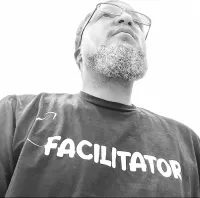

Your Success, Our Priority
Browse our articles below
Make sure to request our FREE Role Player Guide to Recruiting
Click the more stories button for additional articles

How to Develop Champion-Level Confidence Without Already Being a Champion
How to Develop Champion-Level Confidence Without Already Being a Champion
The thing that gets in the way for nearly everyone trying to get somewhere big it’s wild how you’re told to have top-level confidence if want to do anything incredible, except, usually, people only feel that certainty once they’ve actually done something incredible. The whole deal starts feeling like this never ending loop where unless you’re already winning, you’re stuck hoping you can somehow think like you’re winning, then end up just doubting or worrying you’ll never get there at all.
It turns into the usual story tons of talented folks just get stuck right below their real potential and start to wonder if maybe they’re meant to stay there since that old voice keeps repeating, “Well, you haven’t made it yet, so who are you to act like someone who has?”
People at the top, those who consistently show up and actually pull off the high-level stuff, have figured out a method for getting past this. It’s not magic or some personality trait they were born with, even though from the outside it looks effortless. At some point, each person found their way to this messy but powerful trick psychologists call “confidence bootstrapping,” which is a weird term, though it makes sense the more you look into what they’re doing differently.
Breaking the Circular Logic
There’s a basic idea most people run into where confidence comes in this straight line
Achievement Confidence Greater Achievement
This becomes incredibly frustrating if you’re trying new things or moving up, because on day one you don’t have achievements yet. What high performers actually use is far messier but works better
Strategic Action Evidence Collection Confidence Achievement
Let’s tear into how this actually plays out, step by step, because the details matter more than some checklist.
1. Evidence Engineering
Instead of standing around hoping for some giant victory before feeling confident, people training to be champions get crafty and invent small, low pressure ways to prove to themselves, over and over, that they’re capable. You’ll hear coaches call these “confidence proofs” sometimes. For example, a jazz musician with dreams of playing world stages isn’t just sitting there visualizing success or waiting for a massive gig. Every week, that person finds random tiny venues, jam sessions, open mics, or even asks friends if they can play at a backyard barbecue. After, they sit down, not just remembering that it went okay, but literally jotting down moments hit a crazy fast scale cleanly, improvised a brand new fill, audience smiled at the tricky part. Not just thinking about these, but documenting them so tomorrow, when nerves creep up, there’s a growing pile of proof ready to argue back.
2. Reference Point Selection
Almost everyone makes the same mistake lining themselves up against the greatest in history, scrolling through highlight reels, and then looking at their own results, which doesn’t leave much room for feeling good. People who know how to keep progressing do something sneakier picking reference points that are actually useful for their stage. Imagine an entrepreneur fresh to the game. Instead of stressing about Bezos numbers, the comparison shifts toward that version of themselves from three months ago, or another founder who started a bit before them and is facing similar hiccups. That switch means instead of drowning in pressure, every decent step forward feels visible, giving several opportunities every month to collect these little hits of encouragement without waiting years for a drastic outcome to arrive.
3. Progress Quantification
When your mind’s tired or you hit a rough patch, feelings twist reality until pretty much all growth seems invisible, which is why elite types turn to measurements instead of vague impressions. Take public speaking average folks remember general nerves or a single thing that went wrong. The ones improving fastest They record each talk, count words per minute to see if things speed up or slow down under stress, mark audience reactions at spots that land hard, tally any new or complex ideas snuck into the routine. This practice, putting numbers or clear markers on progress, turns ambiguous memories into undeniable receipts, which helps anchor confidence in facts rather than fleeting moods.
4. Strategic Environment Selection
This last piece makes a bigger difference than almost anybody expects because you can convince yourself of plenty alone but eventually the people around you leak into your mindset. Winner types, people pulling ahead, scan for groups where the vibe centers on improvement and encouragement rather than insecurity. Picture a junior analyst aiming higher she tries to join groups filled with others just above her current rung on the ladder. Those conversations bump up her expectations, but also normalize mistakes and learning, creating a sort of confidence greenhouse, which nudges her along even before she truly feels ready.
Why This Strategy Works
The actual reason behind all this being effective Confidence, deep down, uses patterns. Brains run constant checks scanning old experiences, piecing together obvious wins or problems, scouting for repeating signs that say bad news or good news is coming again. When performers start stacking all these engineered examples, they build these streaks their minds can latch onto, nudging the entire belief system toward expecting better outcomes, even when outer results haven’t exploded yet.
The surprising upside here, and the one nobody really tells you about, is there’s no need to postpone serious confidence for some future moment when every box finally gets checked or some huge win happens. These strategic moves, imperfect as they look, lay the tracks for real psychological momentum right from the beginning not only setting you up for progress, but letting you carry yourself way sooner in ways that create even more opportunities to collect evidence as you go.
Resources & Community
🎯
Follow Facilitate The Process on Facebook
https://www.facebook.com/facilitatetheprocess/
🌐
Join Our Recruiting Community
🔗
Get Started Today

